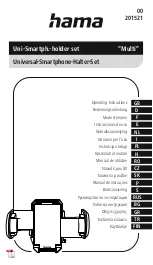
Regulatory notices
REMSOL has not approved any changes or modifications to this device by the user. Any changes or modifications could void the user’s authority to operate the equipment.
This device complies with Part 15 of the FCC Rules. Operation is subject to the following two conditions: (1) this device may not cause interference, and (2) this device must accept
any interference, including interference that may cause undesired operation of the device.
This device complies with FCCC radiation exposure limits set forth for an uncontrolled environment and meets the FCC radio frequency (RF) Exposure Guidelines. This transmitter
must not be co-located or operating in conjunction with any other antenna or transmitter.
This equipment has been tested and found to comply with the limits for a Class B digital device, pursuant to part 15 of the FCC Rules. These limits are designed to provide
reasonable protection against harmful interference in a residential installation. This equipment generates, uses and can radiate radio frequency energy and, if not installed and
used in accordance with the instructions, may cause harmful interference to radio communications. However, there is no guarantee that interference will not occur in a particular
installation. If this equipment does cause harmful interference to radio or television reception, which can be determined by turning the equipment off and on, the user is encouraged
to try to correct the interference by one or more of the following measures:
· Reorient or relocate the receiving antenna.
·
Increase the separation between the equipment and receiver.
·
Connect the equipment into an outlet on a circuit different from that to which the receiver is connected.
·
Consult the dealer or an experienced radio/TV technician for help.
This device complies with Part 15 of the FCC Rules. Operation is subject to the following two conditions: (1) this device may not cause harmful interference, and (2) this device must
accept any interference received, including interference that may cause undesired operation.
ISG-GWS
SPECS
Between -20º C and +70ºC
2401 Mhz
Magnet
included
50 ft
2x Type-N (1.5V)
18 months
Waterproof
Operating Temperature
Transmitter:
Type:
temperature indicator:
Range:
Batteries:
Life span:
Impermeability:
Main sensor’s features:
·
Remotely monitor if garage/gate is open or closed
·
Receive real time alerts on your Smartphone or via email
·
Easy to install magnetic sensor with double sided tapes
·
Keep track of all garage/gate events in a built-in calendar of events.
·
Ideal for garage doors and gates with high traffic (ex. over 10 cycles per day).
SPECS
43 mm
16 mm
92 mm
88 mm






















